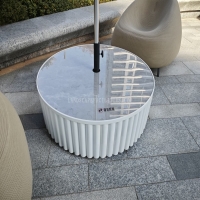Welcome to the website for landscape facilities products and knowledge.
What are the environmental impacts of producing plastic landscape chairs compared to metal or wood alternatives?
The production of plastic landscape chairs has significant environmental implications when compared to metal or wood alternatives. Plastic chairs are typically made from petroleum-based materials, contributing to fossil fuel depletion and greenhouse gas emissions during manufacturing. Additionally, plastic is non-biodegradable, leading to long-term pollution if not properly recycled.
Metal chairs, often made from aluminum or steel, require energy-intensive mining and smelting processes, which can result in habitat destruction and high carbon emissions. However, metal is highly recyclable, reducing its long-term environmental footprint.
Wood chairs, sourced from sustainably managed forests, offer a renewable and biodegradable option. While wood production involves deforestation risks, certified sustainable wood minimizes these impacts. Wood also has a lower carbon footprint compared to plastic and metal, as trees absorb CO2 during growth.
In conclusion, while plastic chairs are durable and low-maintenance, their environmental costs are high. Metal chairs excel in recyclability, and wood chairs are the most sustainable if sourced responsibly. Choosing eco-friendly materials for outdoor furniture can significantly reduce environmental harm.
Related search:

Recommendation
Round metal tube border design table with tempered glass or granite countertop on the top.